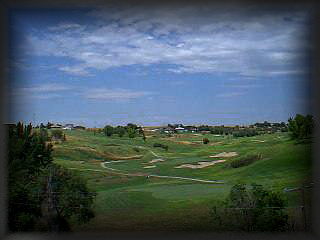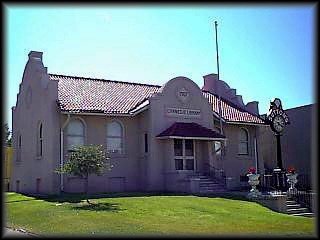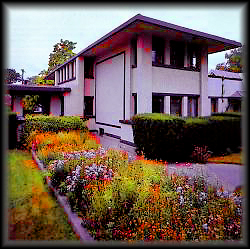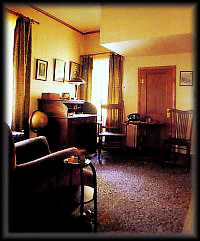
|
|
|
|||
| Historical Downtown McCook | |||
|
|
A landmark of its own, downtown McCook is lined with striking architectural
designs. Each building is rich in its own history, providing an enjoyable
atmosphere reminiscent of the times in which McCook experienced its booming
growth. |
| |
| Heritage Hills Golf Course | |||
Featuring 250 beautiful acres on the west edge of McCook that plays 18 holes to one of the hardest course and slope ratings in the state with a Par 72. Visitors agree that it is one of the most challenging tests of golf ever experienced. Heritage Hills is ranked "One of Golf Digest's Top 75 Public Golf Courses In America", and has been named as one of the "Top 100 Values". The course resembles the Scottish highlands with its rolling-prairie links. As you drive from Heritage Hills' elevated tees to its elevated greens, you'll encounter plenty of challenging hazards with bunkers, sand traps, hills, bluffs, lakes and ponds. 6000 Club House Drive 308-345-5032 |
 |
||
| Broken Tee Par 3 Golf Course | |||
Southwest Nebraska's newest course located along the beautiful Kelly Creek walking trail. Broken Tee Par 3 is an 18-hole family oriented course where length takes a back seat to accuracy and golfers of any skill level should feel right at home. |
|||
|
9 holes $7.00 / 18 holes $11.00 905 E. 7th Street 308-345-8820 Motorized Carts Only Seniors/Handicapped |
|||
| Doyle Site | |||
Doyle is one of the finest examples of Woodland culture in the Republican River valley of southwest Nebraska and northwest Kansas. Work at the site uncovered a superb example of a Woodland house floor. Artifacts, particularly pottery vessels, attribute the occupation to the Keith Phase (A.D. 500-1000), the only known Woodland culture in southwest Nebraska. Radiocarbon dates suggest two separate occupations, the first about A.D. 50 and another about A.D. 550-600. These dates offer preliminary evidence of Woodland culture emerging in the Republican basin five centuries earlier than previously thought. The Doyle Site is listed on the National Historic Register.
|
|||
| McCook Army Air Base | |||
McCook Army Air Base, activated April 1, 1943, was one of 11 Army Air Force training bases in Nebraska during World War II. Some 15,000 servicemen and 500 civilians were stationed here. The 2,100 acre base included three 150 by 7,500-foot concrete runways, five hangars, and barracks for 5,000 men. The base closed December 31, 1945.
|
|||
| McCook Carnegie Library | |||
The McCook Library, listed on the National Historic Register, is an
example of the Spanish Colonial Revival style, designed by architect William A.
Marean of Denver, Colorado. Marean designed numerous turn-of-the-century
buildings of prominence in Denver and the surrounding area, but the library
building in McCook is the only structure in Nebraska known to have been designed
by him. Property for a building site was donated by a local firm, and Andrew
Carnegie provided construction funds in December of 1905. The library was
dedicated on February 17, 1908. 423 Norris Avenue |
 |
||
| McCook Community College | |||
McCook Community College, Nebraska's oldest two-year college, occupies an attractive eight-building campus in the northeast residential area in McCook. Opened in September of 1926, the college offers more than 20 academic and pre-professional transfer programs plus numerous vocational programs for the residents of Southwest Nebraska.
|
|||
| Frank Lloyd Wright's Sutton House | |||
One of America's most influential and imaginative architects,
Frank Lloyd Wright, spent almost 70 years creating a striking variety of
architectural forms. 602 Norris Avenue is one of the few homes west of the
Mississippi River designed by this internationally famous man. The Sutton House
is an example of Wright's prairie style, in which he blended the structure with
it's natural surroundings. The house was designed in 1905-7 and was completed in
1908. |
 |
||
| Senator George W. Norris Home | |||
Built in 1886, the Senator George W. Norris Home is both a state and national
historic site focused on the history and vision of Senator George Norris
(1861-1944). The Home is listed on the National Historic Register. |
 |
||
Senator Norris completed major remodeling in 1931, reportedly as his own private relief project during the Depression. The double garage was also built in 1931. |
|||
The steep tiled roof, stucco exterior and half-timber trim greatly changed the outside appearance. The brick fireplace and sunroom were added and the roof raised a half-story. A wider staircase was added in the new entryway and the previous narrow stairway became the pantry between the kitchen and study. There were now three large bedrooms upstairs, each with a full-sized bathroom. |
|||
The home has been magnificently preserved along with the furnishings and appliances that were used when the home was occupied by the Senator and his wife. As you walk into the home, one of the first things you will notice is the beautiful interior woodwork. |
|||
A proud portrait of the Senator is mounted above the fireplace in a living room full of antique furniture and books. The study features a wooden desk with the Senator's spectacles and writing instruments laying out as if he was just sitting there. A fabulous 1937 black Buick with a straight-8 engine and suicide doors is still parked in the garage. |
|||
Prisoner-of-War Camp - German P.O.W. camp built in 1943. |
|||
Pawnee Woman's Grave |
|||
|
|||
| First Homestead Red Willow County Marker | |||
The Round Sale Barn |
|||
Copper Kettle Monument - a Nebraska State Historical MarkerLocated in Norris Park |
|||
Nelson Buck Survey Party Massacre Marker |
|||
Bohemian Families' Marker |
|||
Blue Star Memorial Marker - a memorial for service personnel. |
FOR RESERVATIONS CALL 308-345-7091
CEDAR INN | 1401 East C Street |McCook, Nebraska 69001 Phone: 308-345-7091 | Email: info@cedarinn.online | www.cedarinn.online |